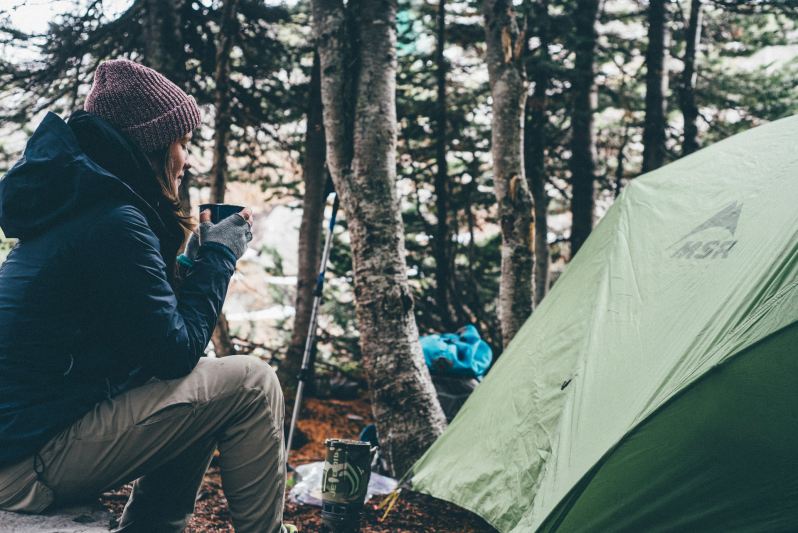Camping is one of America’s favorite past times. It’s so healing to unplug from the world and get a dose of nature, but sometimes, it’s not feasible to drag all of your friends along. If you’re in desperate need of the outdoors but can’t grab the rest of your crew, why not take yourself on your camping trip? Here’s how to get started with solo camping and everything you need to know to stay safe along the way.
Choose your solo camping location

When solo camping, one of the primary concerns is safety. One of the best ways to stay safe is to choose your camping location carefully. If it’s your very first time solo
If you can’t choose a familiar place, do your research. Choose a well-reviewed and established campground with park staff who can help if you run into any issues. Ultimately, set up camp in a spot that’s not too isolated so that there are people around who can help but not so exposed that everyone knows that you’re on your own.
Plan thoroughly for solo camping

Since you won’t have a second pair of hands around, it’s more important than ever to plan your trip thoroughly. Research the weather forecast, terrain, and local hazards, and prepare accordingly. The National Park Service has a list of 10 categories essential items to take with you while out in the wilderness, so here’s a short breakdown:
- Navigation: Especially if you’re planning on hiking, don’t rely on just your phone for navigations. Bring a topographical map and a compass and know how to use it in case of emergencies.
- Sun protection: Sunglasses, sunscreen, and hats aren’t just for the summer. Even if you’re going on a winter adventure, protect your skin and eyes from harmful rays.
- Insulation: You never know when the temperature will take a dip, so remember to layer up and bring thermals, an insulating jacket, and a rain shell, just in case.
- Illumination: When it starts to get dark, you’ll want all kinds of light with you. Make sure you bring a flashlight, a couple of lanterns, or a headlamp to be safe. Extra batteries will also be your best friend.
- First aid supplies: Whether you get a standard one or modify it to suit your needs, packing a first aid kit is a must. This is definitely one of those things where it’s better to have it and not need it than to need it and not have it, so pack it along. Check all expiration dates before you go.
- Fire: If fires are allowed at your campground, enjoy the warmth and heat of a fire. Some campgrounds have rules about whether you can forage for sticks, so make sure that you check on your location’s website. Bring more than enough firewood, matches, and fire starters to make this easy.
- Repair kit and tools: Duct tape can do so many things, so I highly recommend taking it with you. You never know when you’ll get a tear in your tent or sleeping bag. Camping knives are also extremely useful, and multi-tools can come in handy.
- Food: Packing extra food is a must, especially if you’re planning on leaving your campsite. You’ll burn more calories out in nature, so have some no-cook or easy-cook meals that have good nutritional value. It’s always a good idea to practice food safety if you don’t want animals coming to visit, so check the local regulations.
- Hydration: Not bringing enough water is one of the easiest ways for a trip to go downhill. Make sure that you have more than you need, and if your campground has potable water, be sure to utilize it.
- Shelter: Even when you are just taking a day hike, a tent, space blanket, and tarp can help protect you from a critical situation.
If it’s legal in your area, bring a canister of bear spray, an air horn, or a legal self-defense item and learn how to use it properly. You never know when it could come in handy.
Avoid drawing unwanted attention
When you’re camping solo, avoid posting real-time updates on social media about your solo trip. Be friendly, but don’t share too many details with strangers. Sometimes the
That said, you should tell your direct loved ones or close friends where you are going, your itinerary, and how long you’ll stay. That way, if something goes wrong, search and rescue will have a general idea of where you might be and what you might be doing.
Ultimately, solo camping can be a ton of fun. Just make sure to have a backup plan in case of injury, bad weather, or unexpected risks.




